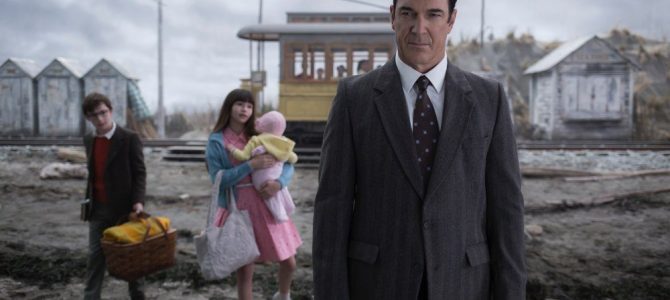
If you’re expecting a review that bemoans streaming TV or the commercialization of popular children’s literature, you should look elsewhere. You would do better to read a cheerier Federalist article, such as one about the state of modern journalism or peanut allergies.
This is because the Netflix adaptation of “Lemony Snicket’s A Series of Unfortunate Events” is morbidly brilliant, an addictive take on the postmodern fairytale.
A Better Adaptation of the Books
Assuming you’re not familiar with “A Series of Unfortunate Events,” the 13-book series for middle-grade readers, the story follows three children—Violet (played by Malina Weissman), Klaus (Louis Hynes), and baby Sunny (a remarkably expressive Presley Smith)—whose parents perish in a suspicious house fire. The orphans’ lives go from bad to worse when they are adopted by Count Olaf (Neil Patrick Harris), an actor who seeks their fortune. No matter where the children go or how quirky or irresponsible their various guardians are, Count Olaf lurks somewhere in disguise. The children must always use their inventing, reading, and biting skills to outsmart him.
The Netflix version, scripted by David Handler (a.k.a. the real Lemony Snicket), for the most part follows these books to the letter, unlike the 2004 Jim Carrey adaptation with its Hollywood insistence on a happy ending. Each of the first four books gets two 45-minute episodes, which fill out their runtime by adding a subplot about the secret organization at the heart of the series.
ASOUE does a superb job of translating the books’ meta-humor to the screen. This is most obvious in the narrator character of Lemony Snicket (Patrick Warburton), who opens the series in a maze of dank tunnels, grimly warning viewers to stream another show instead.
Unlike the books, where Snicket is simply a film-noir style narrator, we see Warburton standing in various ludicrous outfits as he comments on the story and defines words for viewers’ edification. His ironic delivery somehow makes the show’s dark humor and violence (characters die off screen by snakebite and being burned alive, among other things) more palatable—as if this were a bedtime story told by your strange, Tim-Burton-loving uncle.
Dark Tales Are a Human Tradition
Some might argue that ASOUE typifies a downward spiral in children’s entertainment, where writers and filmmakers depict increasingly adult themes for younger and younger viewers. However, if anything, ASOUE is the latest chapter in a longstanding trend blazed by the likes of the Brothers Grimm and Roald Dahl.
Many children’s authors have acknowledged that childhood is frightening. Children ultimately have little control over their families and life choices. They must face dead pets, injustice, and adults’ inconsistencies, not to mention fears of abandonment and defenselessness. Literature helps them grapple with these problems vicariously, and often by exaggeration.
For instance, when Violet Beauregard turns into a blueberry in “Charlie and the Chocolate Factory,” children experience the horror of rebellious choices. When Cinderella’s stepsisters have their eyes pecked out by birds, kids feel the victory of justice mixed with the grief of loss—in spite of Cinderella’s happily ever after, she still doesn’t reunite with her dead father.
ASOUE follows this pattern. Violence to evil characters is viewed as a natural consequence, while characters who die for no good reason are mourned. Soon after the Baudelaires’ parents die, we get a lingering shot of the children gazing back at their burned home, sadness written across their faces. With every major character’s death, the camera takes a few moments to let viewers contemplate its impact.
Postmodernism Throughout, For Good and Ill
The show, however, is just as much an heir to postmodern thought and literature, with its intertextual references to classics like “Moby Dick” and winking way of shattering the fourth wall. Few characters are depicted as black and white, either. The Baudelaires’ many guardians are often well-intentioned, but through ignorance, pride, or fear, they refuse to care for the orphans as they should. Even Count Olaf, who is undoubtedly dastardly, is also a witty charmer in Neil Patrick Harris’s capable hands.
Because or in spite of these postmodern shades of gray, the Baudelaires never let grief or injustice define them: What matters are their own attitudes and actions. Violet protects her siblings by being the optimistic one and by inventing delightfully complex machines. Klaus answers challenges with quips from his favorite books. In one scene, the orphans agree that even though Count Olaf has practically enslaved them, they have food and a roof and each other, and that is “better than nothing.”
Certainly this response, though bleak, is better than other popular children’s series, where violence is morally ambiguous and rebellion the best and immediate response to an oppressive authority.
Is ASOUE a show for kids? Much depends on your style of parenting and your child’s personal taste. The show is undoubtedly a fun ride, with complexity and character development that are only possible with the long-form TV miniseries. Don’t expect a happy ending though, because, as Snicket reminds all viewers, “That’s not how the story goes.”









